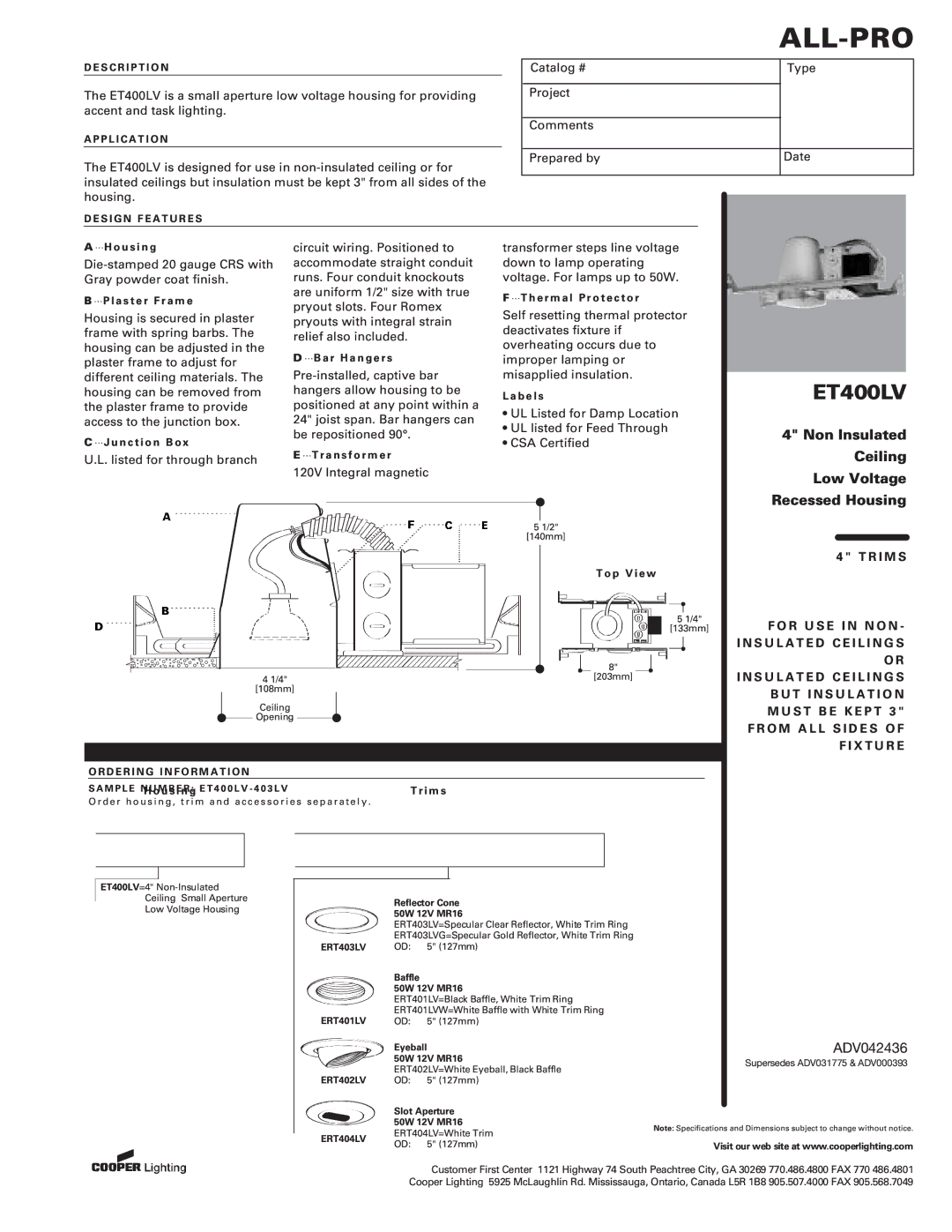ET400LV specifications
Cooper Lighting's ET400LV is a cutting-edge low-voltage lighting solution that caters to the diverse needs of commercial and industrial applications. Built with a focus on performance, energy efficiency, and versatility, the ET400LV has gained recognition for its innovative technologies that enhance both functionality and aesthetic appeal.One of the standout features of the ET400LV is its advanced LED technology. This not only ensures brighter and more uniform illumination but also significantly reduces energy consumption compared to traditional lighting solutions. The integration of LED technology promotes sustainability, offering a longer lifespan and lower maintenance costs, making it an economically viable choice for large-scale installations.
The ET400LV is designed to be highly adaptable, featuring a range of wattage options to suit various environments and needs. This flexibility allows users to select the appropriate lighting level for different spaces, be it warehouses, gymnasiums, or retail settings.
Another key characteristic of the ET400LV is its robust construction, which makes it ideal for harsh environments. Its durable design withstands physical impacts and adverse weather conditions, ensuring consistent performance and reliability. The fixture is also treated to resist corrosion, making it suitable for outdoor applications where exposure to moisture may be a concern.
Cooper Lighting has incorporated smart technologies into the ET400LV, including advanced controls for dimming and tuning. This feature not only allows for customized lighting experiences but also contributes to energy savings by enabling users to adjust light levels according to their specific needs.
Aesthetic considerations have not been overlooked in the design of the ET400LV. The clean, modern look of the fixture complements a variety of architectural styles, allowing it to blend seamlessly into any environment. The minimalistic design helps to enhance the overall ambiance of the space while providing effective lighting solutions.
In summary, the Cooper Lighting ET400LV stands out for its energy-efficient LED technology, robust construction, adaptability, and smart control options. It is an ideal lighting solution for those seeking to optimize their facilities while also reducing operational costs. With its combination of performance and style, the ET400LV is a worthy investment for any lighting project.

